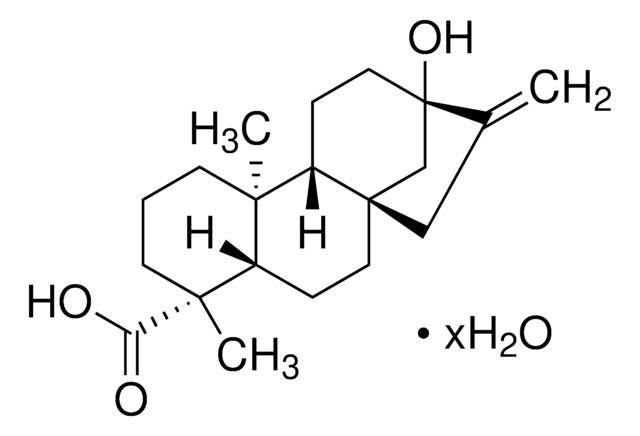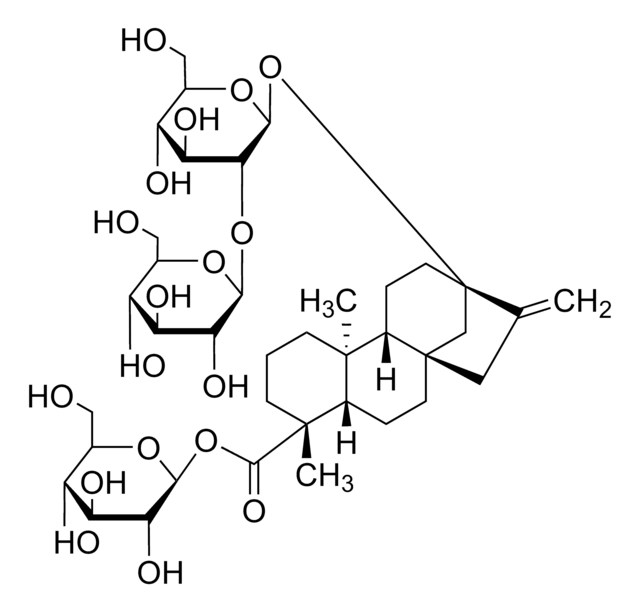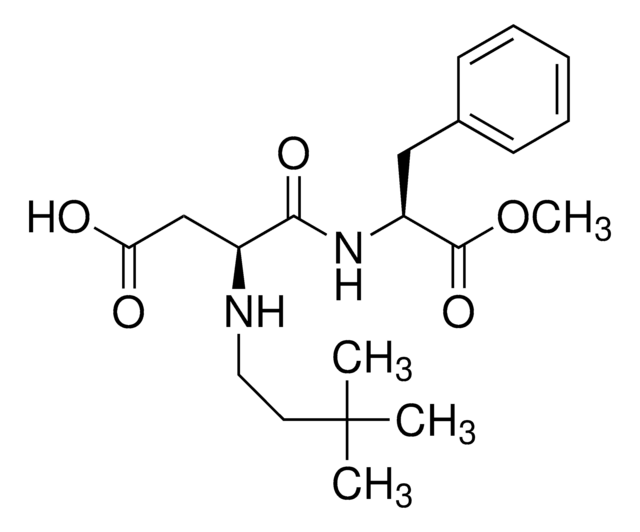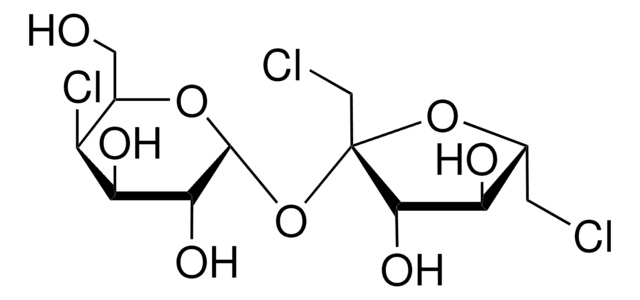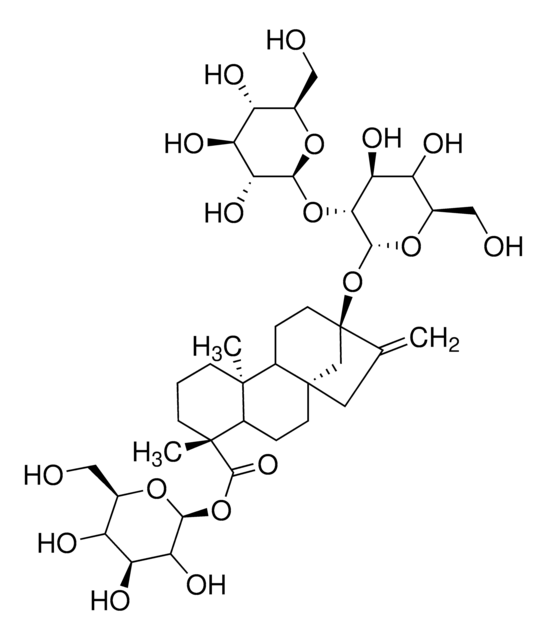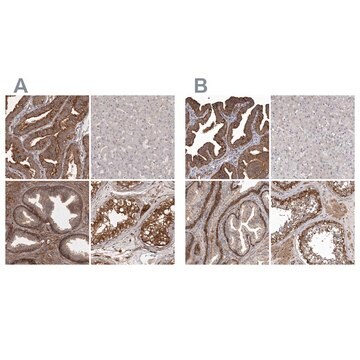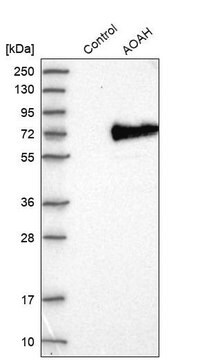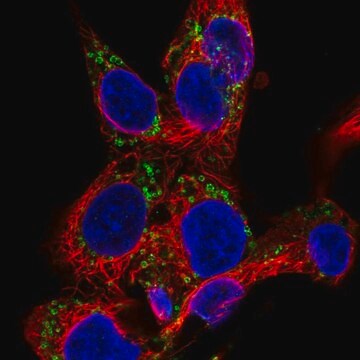19345
Steviol
analytical standard
Synonym(s):
(4α)-13-Hydroxykaur-16-en-18-oic acid, ent-13-Hydroxykauran-16-en-19-oic acid, NSC 226902
About This Item
Recommended Products
grade
analytical standard
Assay
≥98.0% (HPLC)
shelf life
limited shelf life, expiry date on the label
technique(s)
HPLC: suitable
gas chromatography (GC): suitable
impurities
≤5.0% water (Karl Fischer)
application(s)
cleaning products
cosmetics
food and beverages
personal care
format
neat
SMILES string
C[C@@]12CCC[C@](C)([C@H]1CC[C@]34CC(=C)[C@](O)(CC[C@@H]23)C4)C(O)=O
InChI
1S/C20H30O3/c1-13-11-19-9-5-14-17(2,7-4-8-18(14,3)16(21)22)15(19)6-10-20(13,23)12-19/h14-15,23H,1,4-12H2,2-3H3,(H,21,22)/t14-,15-,17+,18+,19+,20-/m0/s1
InChI key
QFVOYBUQQBFCRH-VQSWZGCSSA-N
Looking for similar products? Visit Product Comparison Guide
1 of 4
This Item | HPA026716 | HPA037973 | HPA018849 |
|---|---|---|---|
| conjugate unconjugated | conjugate unconjugated | conjugate unconjugated | conjugate unconjugated |
| biological source rabbit | biological source rabbit | biological source rabbit | biological source rabbit |
| product line Prestige Antibodies® Powered by Atlas Antibodies | product line Prestige Antibodies® Powered by Atlas Antibodies | product line Prestige Antibodies® Powered by Atlas Antibodies | product line Prestige Antibodies® Powered by Atlas Antibodies |
| clone polyclonal | clone polyclonal | clone polyclonal | clone polyclonal |
| storage temp. −20°C | storage temp. −20°C | storage temp. −20°C | storage temp. −20°C |
General description
Application
Storage Class Code
11 - Combustible Solids
WGK
WGK 1
Flash Point(F)
Not applicable
Flash Point(C)
Not applicable
Choose from one of the most recent versions:
Already Own This Product?
Find documentation for the products that you have recently purchased in the Document Library.
Customers Also Viewed
Articles
HPTLC is an efficient method to determine Steviol Glycosides content in Stevia using our HPTLC plates and reference materials, including a new introduced Stevia extract reference material.
Our team of scientists has experience in all areas of research including Life Science, Material Science, Chemical Synthesis, Chromatography, Analytical and many others.
Contact Technical Service

